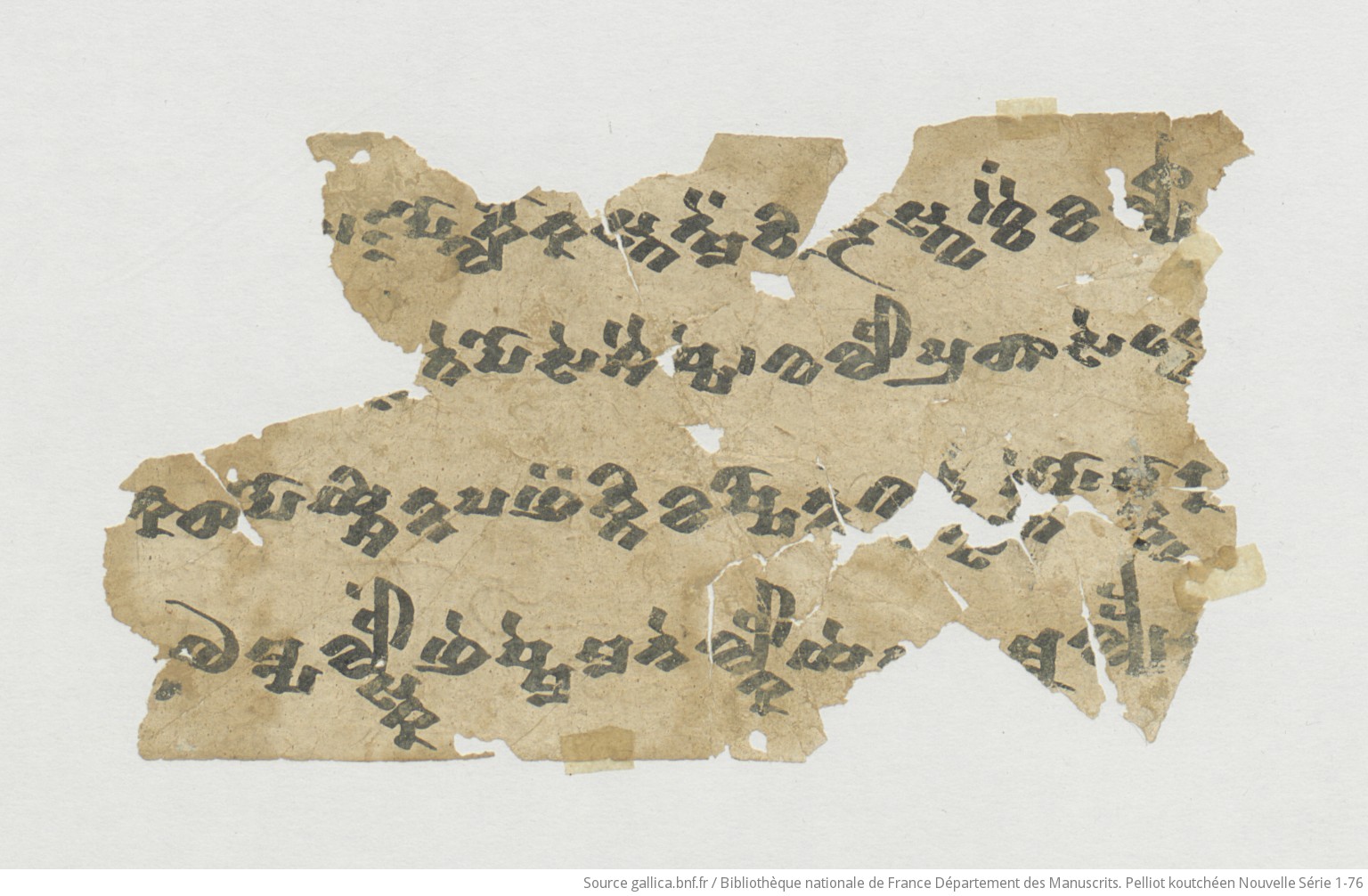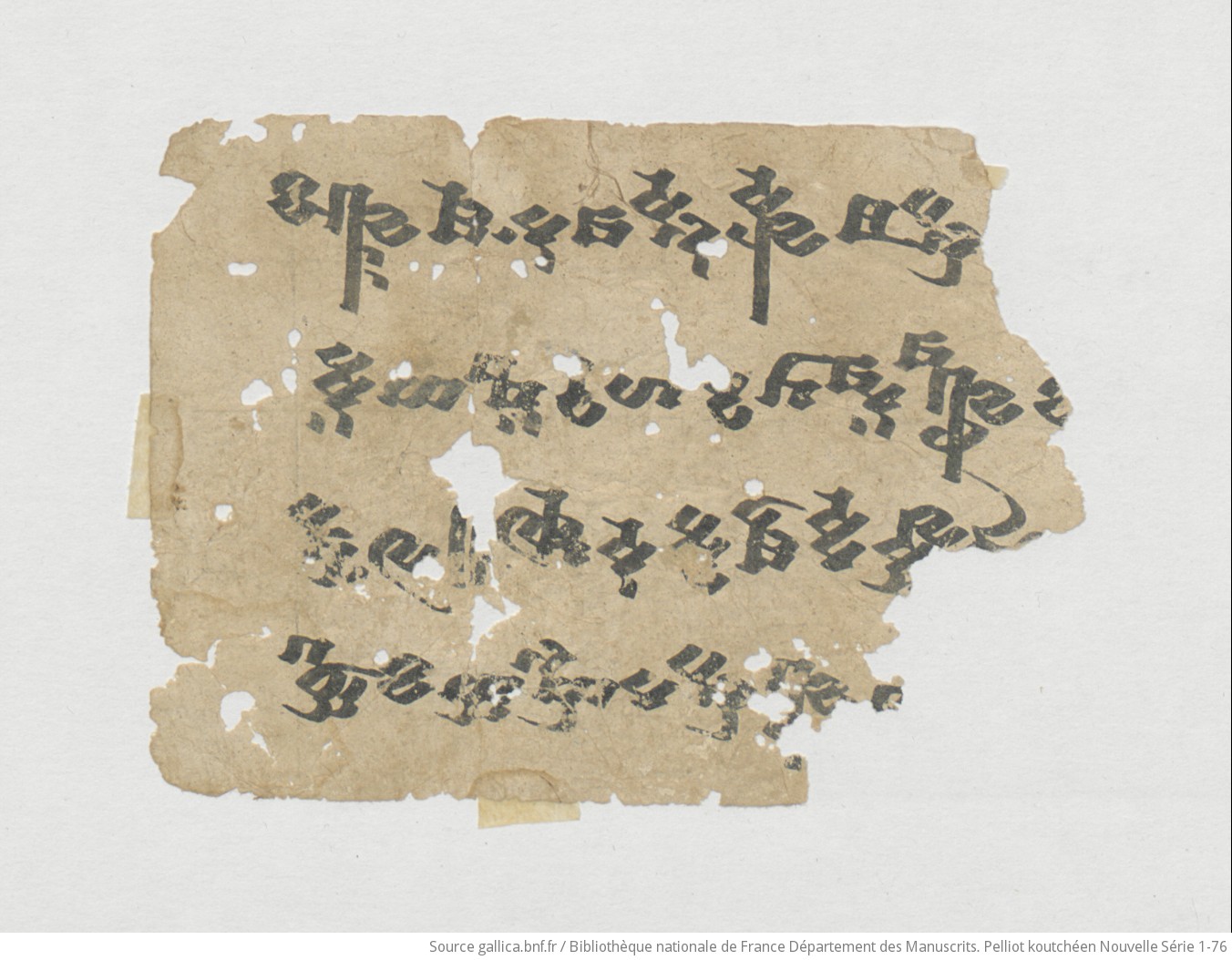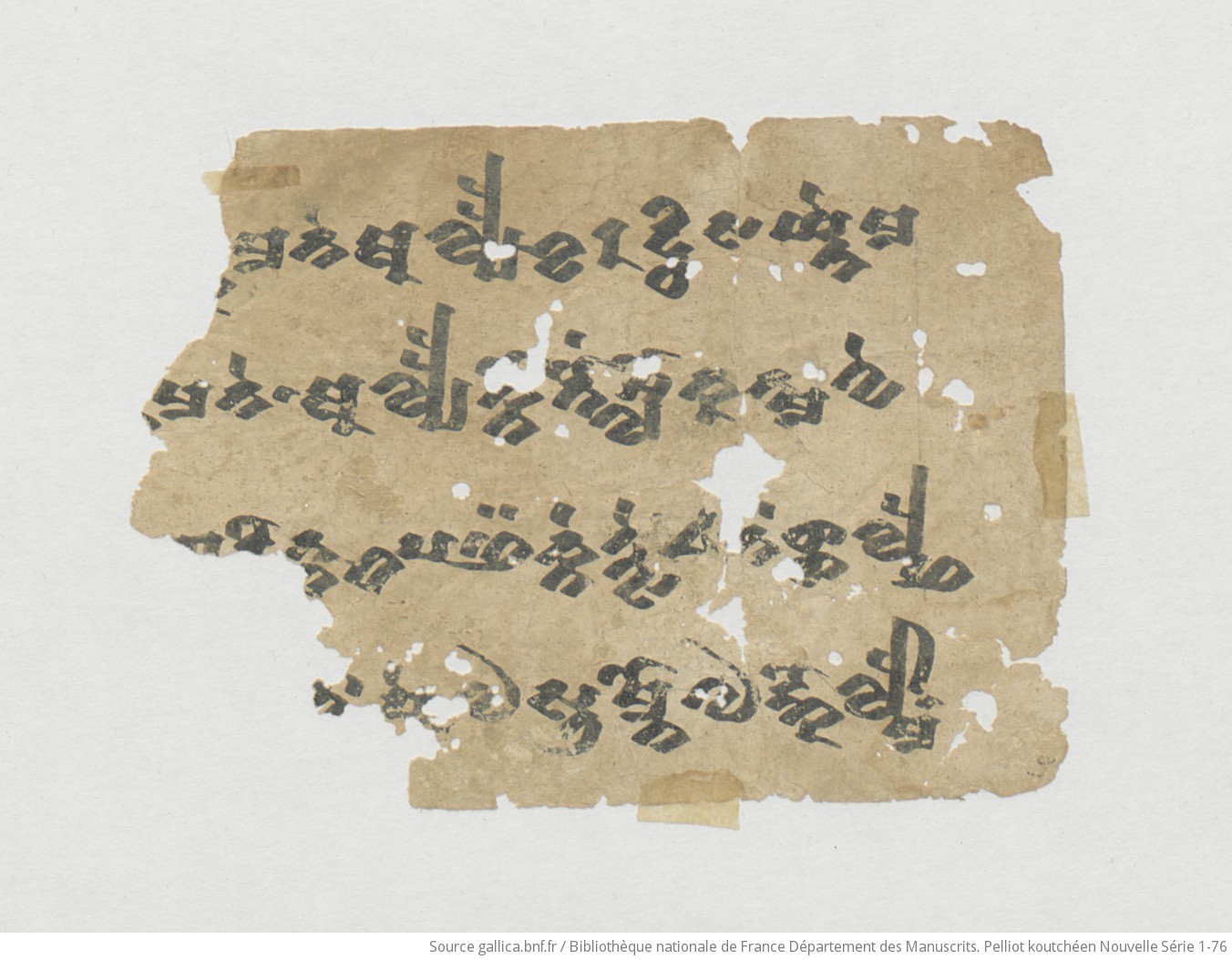Work in progress
PK NS 37
| Known as: | PK NS 37; Pelliot Koutchéen Nouvelle Série 37; PK NS 38; DA 2 |
|---|
| Cite this page as: | Georges-Jean Pinault; Hannes A. Fellner (collaborator). "PK NS 37". In A Comprehensive Edition of Tocharian Manuscripts (CEToM). Created and maintained by Melanie Malzahn, Martin Braun, Hannes A. Fellner, and Bernhard Koller. https://cetom.univie.ac.at/?m-pkns37 (accessed 05 Jul. 2025). |
|---|
Edition |
| Editor: | Georges-Jean Pinault; Hannes A. Fellner (collaborator) |
|---|
| Date of online publication: | 2014-08 |
|---|
Provenience |
| Main find spot: | Duldur-akur |
|---|
| Specific find spot: | DA angle Ouest de la grande cour |
|---|
| Expedition code: | DA, Gr. cour, angle ouest 30,4; M 496,39 |
|---|
| Collection: | Bibliothèque nationale de France, fonds Pelliot Koutchéen (Paris) |
|---|
Language and Script |
| Language: | Skt.; TB |
|---|
| Linguistic stage: | classical |
|---|
| Script: | classical |
|---|
Text contents |
| Title of the work: | Mahāprabhāsa-Avadāna |
|---|
| Text genre: | Literary |
|---|
| Text subgenre: | Jātaka/Avadāna |
|---|
| Verse/Prose: | prose; verse |
|---|
| Meter: | 543 (4x) |
|---|
Object |
| Manuscript: | Mahāprabhāsa-Avadāna |
|---|
| Material: |
ink
on paper |
|---|
| Form: | Poṭhī |
|---|
| Size (h × w): | 7.8/7 × 24.4/20.4 cm |
|---|
| Number of lines: | 4 |
|---|
| Interline spacing: | 1.7 cm |
|---|
Images
Transliteration
| a1 | /// : 3 po klo ka sta nmeṃ ci [r](·)¯ ¯r swa ñcaiṃ ka ly[m]i· (– –) (·)[p](·) lṣi stā na ysā yo ka ñpo |
|---|
| a2 | /// ·s· te po se śai ṣṣe : wa lo pra bhā se i [w](·)¯ ¯r kl[au] tka ā kti ke 4 || o mno |
|---|
| a3 | /// ka¯ ¯s̝ po yśi nta pa ñä kti ka ṣṣī nta [au] ntsa nte po śtwā ra ka lymi nmeṃ pra ti ha ri ṣṣeṃ ya kneṃ |
|---|
| a4 | /// [¯k] o mpa lskoṃ ñe ṣme ma ne lko ye n (– –) a lyai[¯] [¯k] stā¯ ¯m lkā ske ma ne • a lyai¯ ¯k |
|---|
| b1 | /// ·y·¯ ¯k piṃ twā¯ ¯t yne ma ne • a lyai¯ ¯ṅk [o] [n](·) lmeṃ tsa (–) (·)[k](·) ma ne a lyai¯ ¯k ra ddhi sa yne ma |
|---|
| b2 | /// ha rī nta ya ma ske ma ne ñä kteṃ¯ ¯ts pe lai kne a ksa s[k]e ma ne • a lyai kno toṃ ślo ka nma we |
|---|
| b3 | /// (·)aṃ pau ntsa¯ ¯t pla tstso • yu jya dhvaṃ bu ddhśā sa n(·) pa rī tta¯ ¯t pa ñä kte ntse e nä s̝s̝a lñe |
|---|
| b4 | /// so sru ka lñe ṣṣe re tke • [n]a [ḍ]ā gā ra i va kuṃ [ja] (– –) rwā ṣ[ṣ]e o stra mno o ṅko lmo • |
|---|
Transcription
Translation
| a1 | From all the pores rays crossed the directions, the lotus beds (looked) wholly golden colored. |
|---|
| a2 | This world was wholly (illum)inated. The king Prabhāsa became amazed in the meantime. Here then |
|---|
| a3 | ... the omniscients, Buddha-lords, teachers, having been ... started (to arrive) from all the four directions in wonderful ways, |
|---|
| a4 | some were seen sitting in meditation, some others looking at the tree, some others ... |
|---|
| b1 | some others going for alms, some others freeing the beings, some others going by miraculous power, ... |
|---|
| b2 | (some others) making wonders [and] teaching the Law to the gods. But others are saying these stanzas: |
|---|
| b3 | Sanskrit You (pl.) get started! You (pl.) leave! Sanskrit Join yourselves to the teaching of the Buddha-lord! |
|---|
| b4 | You destroy (pl.) the army of death, Sanskrit as the elephant [destroys] a house made of reeds! |
|---|
Other
| b3 | Auf! [wtl. fangt an!] Geht hinaus [und] schließt euch der Lehre des Buddha an! (Schmidt 1974: 370) |
|---|
Commentary
Remarks
| * | Fragments PK NS 34, PK NS 37 (including 38), m-pkns144 and PK NS 398 belong to the same manuscript. In this fragment the right margin is fairly well preserved, with a single vertical line 1,7 cm from the edge; no horizontal ruling is visible. The paper is torn, perforated and crumpled in many places. NS 37 completes NS 38 to the right. The whole fragment makes up the right part of a leaf. |
|---|
| * | The lines b3-b4 contain the quotation and pada-like translation of the first of two famous Udānavarga stanzas, Udv. IV 37 and 38. This is a parallel in Tocharian A texts A 258 a4-a5 and A 354 b5-b6. |
|---|
Philological commentary
| n1 | The form uppālṣi is nom. pl. m. of the adjective uppālṣe, which is metri causa for the expected nom. pl. f. uppālṣana. |
|---|
| n2 | The metrical part follows a meter of 4x12 syllables with a rhythm of 5/7. |
|---|
| n3 | The form alyaiṅk stands for the nom. pl. m. alyaik which is found in all other instances. It is analogical from the obl. pl. m. which apparently shows a stem with nasal, cf. alyeṅkäṃ. |
|---|
References
Complete edition
Pinault 1988a: 194-200; Lévi 1925: 306-307
Translations
Schmidt 1974: b3 (370)
Bibliography
Lévi 1925
Lévi, Sylvain. 1925. “Le Sūtra du Sage et du Fou dans la littérature de l’Asie Centrale.” Journal Asiatique 207/2: 305–32.
Pinault 1988a
Pinault, Georges-Jean. 1988a. “Révision des fragments en tokharien B de la légende de Mahāprabhāsa.” In Studia Indogermanica et Slavica. Festgabe für Werner Thomas zum 65. Geburtstag, edited by Peter Kosta, Gabriele Lerch, and Peter Olivier, 175–210. München: Sagner.
Schmidt 1974
Schmidt, Klaus T. 1974. “Die Gebrauchsweisen des Mediums im Tocharischen.” PhD, Universität Göttingen.






